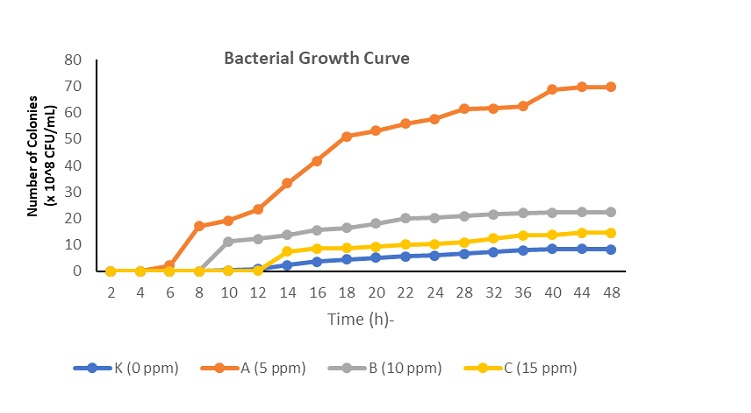Effect of Different Molasses Doses in Bacterial Growth (Commercial Probiotics)

The study investigated the optimal dose of molasses for the cultivation of commercial probiotics containing Bacillus amyloliquefaciens and Bacillus subtilis. A two-month laboratory experiment was conducted at the Faculty of Fisheries and Marine Sciences, Jenderal Soedirman University, using a Completely Randomized Design (CRD) with four treatments: K (0 ppm), A (5 ppm), B (10 ppm), and C (15 ppm), each with three replications. The study measured optical density (OD) and bacterial growth over 48 hours. The results showed that Treatment C (15 ppm) produced the highest OD value (0.014), indicating substantial bacterial growth. However, it exhibited the slowest growth phase. In contrast, Treatment A (5 ppm) demonstrated the fastest growth phase and achieved the highest bacterial density throughout the study. This suggests that 5 ppm of molasses is ideal for rapid bacterial proliferation. Treatment K (0 ppm) resulted in the lowest OD (0.0042) and led to bacterial death by the end of the experiment, highlighting the necessity of molasses for bacterial survival and growth. In conclusion, a 5 ppm molasses dose (Treatment A) proved to be the most effective for promoting optimal bacterial growth and density, while higher doses resulted in slower growth, and no molasses inhibited bacterial survival
Copyright (c) 2025 Kemuning Cahyaning Tyas Sofyan, jefri anjaini, Taufik Budhi Pramono, Lilik Setiyaningsih

This work is licensed under a Creative Commons Attribution-NonCommercial-ShareAlike 4.0 International License.



















